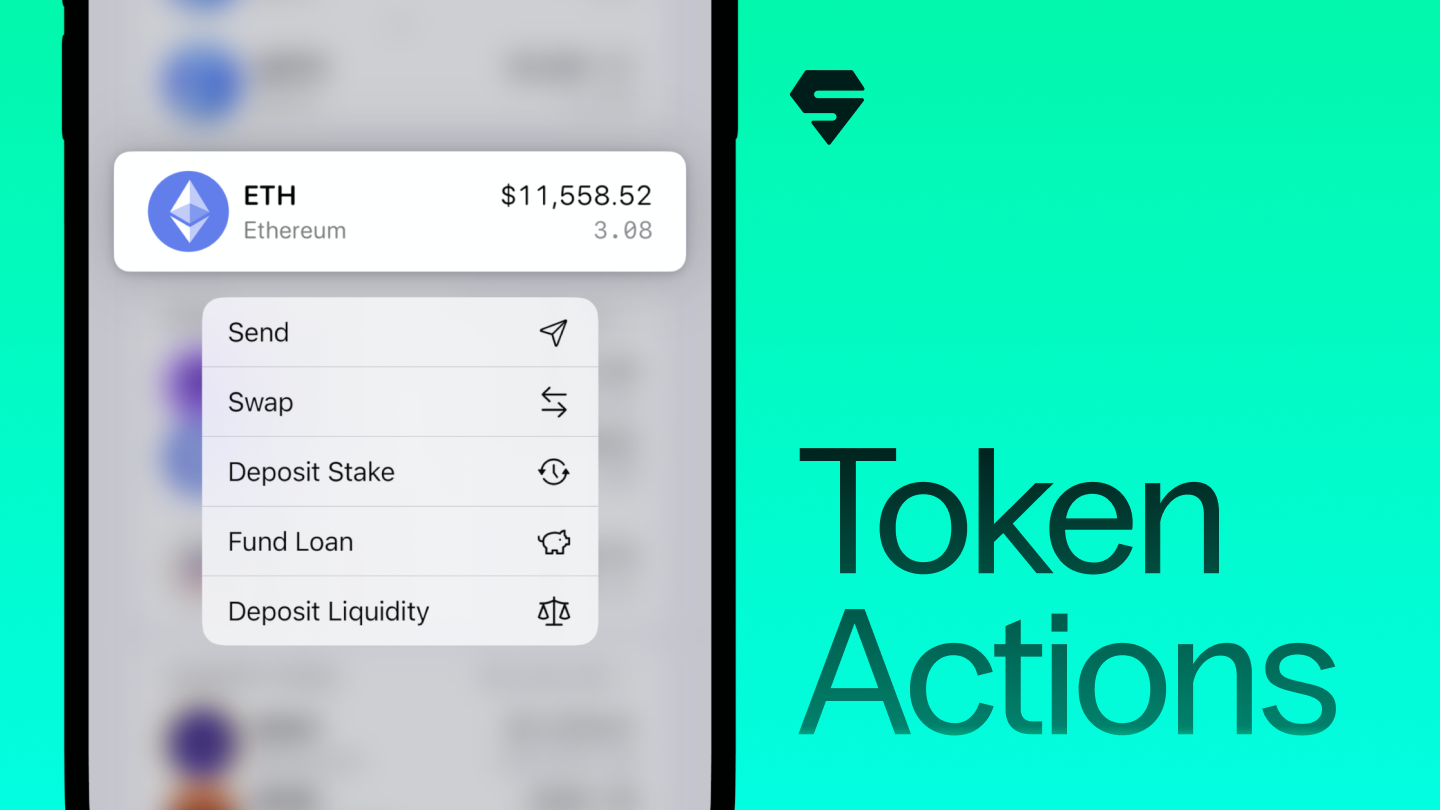
Token Actions
Every application in crypto starts by showing you a list of tokens. The problem is that these apps leave it up to the user to figure out what actions can be performed on those tokens, identify the protocols that enable these actions, and find the correct (and safe) websites to interact with the protocols.
The current interaction model is:
Token → Dapp → Protocol → Action → Token
| Dapp | Protocol | Actions | Token |
|---|---|---|---|
| uniswap.org | Uniswap V2/V3 | Swap/Provide Liquidity | ERC20s |
| xen.network | XEN Crypto | Mint/Stake/Burn | XEN |
| aave.com | AAVE v3 | Lend/Borrow | ERC20s |
This model is unfriendly to new users who may not know the best protocols to use. It also forces users to switch contexts from the current token they’re viewing to finding a dapp, and then locating their tokens after multiple steps.
Token Actions solve this by reversing the interaction model, focusing on the token and the actions you can perform on it. This approach also addresses one of the biggest security issues in crypto: the risk of navigating to compromised websites.
The new interaction model is:
Token → Action → Protocol
| Token | Action | Protocol |
|---|---|---|
| ERC20 | Swap/Provide Liquidity | Uniswap V2/V3 |
| ERC20 | Lend/Borrow | AAVE v3 |
| XEN | Mint/Stake/Burn | XEN Crypto |
Token Actions provide a significantly more streamlined user experience by reducing cognitive load and keeping the user focused on what they are trying to accomplish with a specific token.
Here are examples of token actions:
Swap
Stake
If you’re interested in building products that improve crypto’s UX, reach out to me at any of these links.